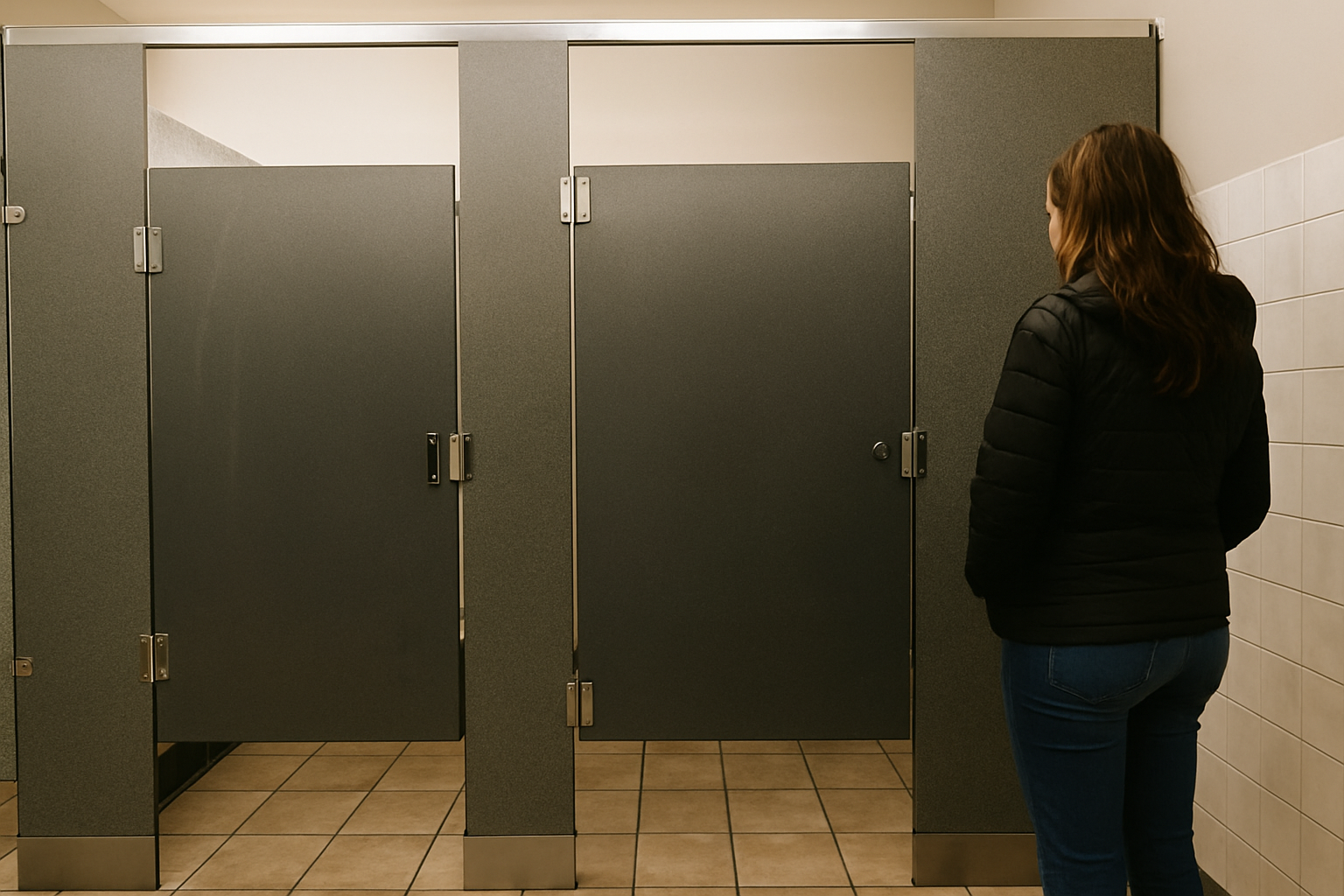Public bathrooms have become the unlikely centerpiece of countless political debates — framed as the frontline in “protecting women and children.” But for many of us, the restroom has always felt like one of the safest public spaces we enter. The real dangers happen elsewhere, and the numbers prove it.
The Bathroom Myth
Decades of crime data tell a consistent story: sexual violence is overwhelmingly committed by someone the victim knows, and it happens most often in private spaces — homes, workplaces, and places of trust like schools and religious institutions.
- According to the U.S. Department of Justice, 93% of sexual assault victims under 18 know their perpetrator.
- RAINN (Rape, Abuse & Incest National Network) reports that 8 out of 10 rapes are committed by an acquaintance — not by strangers in public spaces.
- Bathrooms account for such a small percentage of reported sexual assaults that they are not even listed as a distinct category in federal crime statistics.
So why do bathrooms keep showing up in political talking points? Because they’re symbolic. They’re easy to legislate, easy to fearmonger about, and easy to use as a distraction from the real work of preventing violence.
A History of Manufactured Fear
The “bathroom panic” narrative isn’t new. In the 1950s and 60s, similar rhetoric was used to oppose racial integration, with claims that allowing Black Americans into “white” restrooms would lead to violence. In the 1970s and 80s, anti-gay campaigns pushed similar fears, suggesting that LGBTQ+ people posed a danger in public spaces. Now, that same script has been recycled to target transgender and non-binary people.
The pattern is clear: marginalized groups are painted as predators, the public is told to be afraid, and laws are passed to control where they can exist — not because there is evidence of danger, but because fear is politically useful.
Who Really Pays the Price
Anti-trans “bathroom bills” don’t make restrooms safer. What they do is put transgender and non-binary people — already among the most targeted for harassment — in greater danger.
- The 2015 U.S. Transgender Survey found that 59% of trans respondents avoided using a public restroom in the past year due to fear of confrontation.
- 12% of respondents reported being verbally harassed in a public restroom, and 1% reported being physically attacked.
- Restricting bathroom access can lead to serious health issues, including dehydration, urinary tract infections, and kidney problems from avoiding restrooms altogether.
Where the Real Danger Lies
If safety were truly the goal, legislation would focus on the spaces and situations where most harm occurs:
- Improving domestic violence prevention and survivor support — where the majority of female homicide victims are killed by a current or former partner.
- Holding abusers accountable in workplaces, where harassment and coercion often go unreported due to fear of retaliation.
- Addressing abuse in institutions of power, from religious organizations to law enforcement, where systemic cover-ups have enabled predators for decades.
Bathrooms make headlines, but they don’t address the reality of gender-based violence. The obsession with them is political theater, not prevention.
Safety Requires Truth, Not Theater
When politicians focus on bathrooms, they aren’t protecting women — they’re protecting a narrative. A narrative that says fear should guide policy, that trans and non-binary people are threats, and that safety is something we can achieve through exclusion.
The truth is simpler: the restroom is not the danger. The danger is the refusal to face where harm actually happens — and to act on it.
Real safety will never come from policing who uses the bathroom. It will come from dismantling the systems that allow violence to flourish everywhere else.

